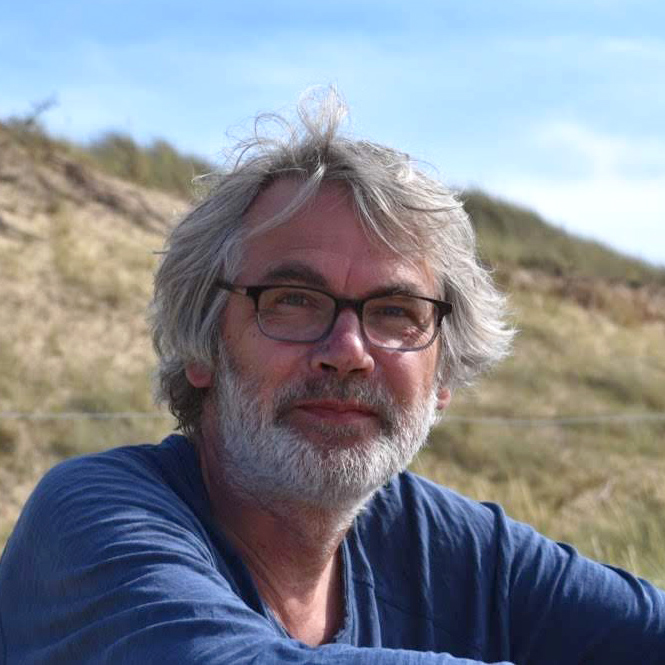The conference is organized around the following six themes, spanning the three conference days:
Biological Relativity and the Biomedical Sciences
Natural Genetic Engineering, Biogenesis, and Reticulate Evolution
Epigenetics and Directed Evolution of Complex Systems
Paradigms and Narratives of Evolution
Cognition, Teleonomy, Agency, and Consciousness
Learning and Intelligence Across and Beyond Life
Thursday January 8th, 2026
THEME: Epigenetics and Directed Evolution of Complex Systems
09hr15
 Raju Pookottil (Onsite)
Raju Pookottil (Onsite)
BEEM: Biological Emergence-based Evolutionary Mechanism: How Species Direct Their Own Evolution
Building upon cell intelligence and multicellular intelligence, the hypothesis I propose, BEEM: Biological Emergence-based Evolutionary Mechanism, examines how organisms may direct their own evolutionary trajectories and how natural selection may not be the primary driver of adaptive evolution. Instead, organisms can meaningfully assess the challenges they encounter, design clever solutions, and incorporate them into future generations, essentially circumventing the need to depend on random variations or selection. The BEEM hypothesis examines various phenomena, including cell intelligence, phenotypic plasticity, genetics, and epigenetics, to support these arguments. To understand the evolutionary origins of intelligence, we must ask fundamental questions, such as how agents engage in complex interactions with meaningful outcomes. Ants, for example, are the agents in an ant colony, while complex protein molecules take up that role in cells. In multicellular organisms, the millions of cells are the agents, and their interactions give rise to practical functions and solutions. Emergence, swarm intelligence, or complex systems can help us describe these agential processes. In the BEEM approaches, genes are understood as organismal tools rather than causal agents themselves. Mechanisms and processes exist that enable the organism to control its genes, their activation, use, and mutations. Mutations are often not random, and when accidental mutations do occur, they are mostly corrected back to a functional state within a few generations. This could explain why some species, known as living fossils, have managed to remain relatively unchanged for over millions of years.
Raju Pookottil is an Engineer and Science Enthusiast who operates several firms in London. He received his Bachelor of Engineering from the University of Calicut in India and an MBA from the University of Lincoln, USA. His earlier business endeavours involved building carbon fibre propellers and other mechanical components for ultralight aircraft. For the past 20 years, Pookottil has turned to the evolutionary sciences, where he has been developing a new hypothesis of how evolution might be an organism-directed process, working independently of natural selection. Dissatisfied with the explanations offered by the Modern Synthesis on how complex traits evolve in organisms, he began exploring the fundamentals of swarm intelligence and from there investigated intelligence in cellular and multicellular systems. He then attempted to connect these concepts with modern understandings of genetics, epigenetics, and other hereditary mechanisms. Pookottil is one of the founding members of The Third Way of Evolution, which he initiated in 2014 along with James Shapiro and Denis Noble. He is a self-taught evolutionary scholar and an innovator by nature, and his core strength lies in bringing disparate pieces of information together and using them to introduce entirely novel concepts. His book on the B.E.E.M theory was reviewed by the Royal Society of Biology.
10hr30 break
11hr00 – 13hr00
 John Mattick (Onsite)
John Mattick (Onsite)
Kuhnian Revolutions in Molecular Biology and Evolution
In his 1962 book The Structure of Scientific Revolutions, Thomas Kuhn described the progress of science as comprising occasional paradigm shifts separated by interludes of normal science, during which investigations are designed and results interpreted within the reigning conceptual framework, until anomalies accumulate and an adequate replacement is formulated. The conceptual framework that has held sway since the inception of molecular biology is that genes are synonymous with proteins, and that all cellular functions, including the control of gene expression, are performed by proteins, tacitly assuming that the mechanisms that regulate microbial physiology are sufficient to orchestrate human development. Many anomalies have accumulated: only 1% of the human genome encodes proteins; genes-in-pieces; transposon-derived repetitive sequences; the lack of scaling of protein-coding genes and the concomitant increase in noncoding sequences with developmental complexity; a plethora of noncoding RNAs expressed in cell-specific patterns; an epigenome; and a million genetic loci termed enhancers that control the spatiotemporal patterns of development. There is a new understanding: Most genes in humans and other complex organisms encode regulatory RNAs that orchestrate the trillions of cell fate decisions that must be made with high precision, and are the primary substrate of adaptive evolution. The long-standing assumptions in evolutionary theory have been that mutations are random and that experience is not communicated to subsequent generations. Both assumptions are demonstrably incorrect, as non-random mutation and epigenetic inheritance have been well-documented in both plants and animals. The underlying issue, as articulated by Downey and Fellows, is that random searches are intractable in complex systems; therefore, evolution must have discovered ways to improve evolvability, especially in mammals, which have long generation times and limited progeny. It is clear there must be an interplay between hard-wired DNA and RNA-directed epigenetic inheritance. Evidence also suggests that the controlled use of transposable elements enhances adaptive exploration. The current challenge is to formulate a cohesive conceptual framework for understanding evolution and evolvability.
John Mattick is a Molecular Biologist and the Professor of RNA Biology at the University of New South Wales in Sydney. He was previously Chief Executive of Genomics England, Director of the Garvan Institute of Medical Research, and Foundation Director of the Institute for Molecular Bioscience at the University of Queensland. Mattick has pioneered a new understanding of the role of noncoding RNA in the differentiation and development of humans and other complex organisms. He has published over 300 scientific articles, which have been cited over 100,000 times, and is currently ranked the #1 scholar globally in noncoding RNA and #4 in RNA. He is an elected Fellow of the Australian Academy of Science, the Australian Academy of Technology and Engineering, and the Australian Academy of Health and Medical Sciences. His honours and awards include Honorary Fellowship of the Royal College of Pathologists of Australasia, Associate Membership of the European Molecular Biology Organization, the inaugural Gutenberg Professorship of the University of Strasbourg, the International Union of Biochemistry and Molecular Biology Medal, the University of Texas Bertner Award for Distinguished Contributions to Cancer Research, and the Human Genome Organization Chen Medal for Distinguished Achievement in Human Genetics and Genomic Research. His current research is focused on the role of RNA in cognitive processes, and he is currently writing a book entitled The Evolution of Intelligence. Recent works include papers on the Kuhnian revolution in molecular; Long noncoding RNAs; and enhancers that express organizational RNAs.
 Abir U. (Andrei) Igamberdiev (Online)
Abir U. (Andrei) Igamberdiev (Online)
Evolutionary Complexification as a Generation and Novel Interpretation of Coding Systems in the Process of Natural Computation
I propose a novel approach to understanding the evolutionary process that goes beyond the Extended Evolutionary Synthesis. In this approach, the phenomenon of evolutionary complexification corresponds to the generation of new coding systems defined as Codepoiesis. The entire process of generating novel coding statements that substantiate organizational complexity leads to an expansion of the system, incorporating externality to support newly generated complex structures. During the complexifying evolution, values are assigned to previously unproven statements by encoding them using new codes or rearranging existing ones. In this perspective, living systems during evolution continuously realize the proof of Gödel's theorem. In the real physical world, this realization is grounded in the irreversible reduction of fundamental uncertainty that appears in the self-referential process of internal measurement performed by living systems. This leads to the formation of a sequence of reflexive loops that establish novel interrelations between the biosystem and the external world, providing a possibility for active, anticipatory transformation of externality. In this concept of complexifying evolution, we propose a metamathematical framework that accounts for the underlying logic of Codepoiesis, outline the basic principles of the generation of new coding systems, and describe the main codepoietic events in the course of progressive biological evolution. Evolutionary complexification represents a metasystem transition that results in the system increasing its external work through the division of labour among its components. This approach provides the conceptual basis for further development of the extended evolutionary synthesis by clarifying its metamathematical foundation, with essential consequences for understanding metabolic closure and morphogenesis. It aims to unite alternative approaches and explore new possibilities for future research in the fields of evolutionary biology, the origin of life, and consciousness.
Abir (Andrei) Igamberdiev is a Russian-Canadian Theoretical Biologist and Plant Scientist. He is a Professor at Memorial University of Newfoundland, Canada. His research is centred on the organization of plant metabolism, on the conceptual development of the foundations of theoretical biology and evolutionary theory, and the history and philosophy of science. He was born in Almaty (Kazakhstan) and lived in Voronezh (Russia), where he studied biology at Voronezh State University. He earned a PhD in biology from the same university and a Doctor of Science degree at the Institute of Plant Physiology of the Russian Academy of Sciences in Moscow. He has held visiting scholarships at Umeå University (Sweden), Free University of Berlin (Germany), University of Wyoming (USA), and Risø National Laboratory (Denmark). Afterwards, he permanently moved to Canada, where he worked at the University of Manitoba (Winnipeg) and then at the Memorial University of Newfoundland (St. John's, Newfoundland), where he is currently a Professor at the Department of Biology. He has published over 300 peer-reviewed journal publications and several books. He is currently editor-in-chief of the Elsevier journal BioSystems and a subject editor of the Journal of Plant Physiology. His research focuses on the organization and evolution of metabolism, the development of code systems during eukaryogenesis, the evolution of meaningful information in the biosphere, the human-driven cultivation of pants, the bioenergetics of plant cells, enzymology, adaptation to hypoxic stress, nitric oxide metabolism in plants, the foundations of theoretical biology and evolutionary theory , and the dynamics of biological and social systems.
David Obon (Onsite)
 Creative Overcome Theory: A Systems-Theoretical Approach to How Innovation Drives Evolution
Creative Overcome Theory: A Systems-Theoretical Approach to How Innovation Drives Evolution
For decades, scientific orthodoxy has expanded the explanatory capacity of the Modern Synthesis—the still-dominant theoretical framework. Despite constant refinements and some reductionist missteps, these efforts still fail to provide satisfactory explanations for some of the most fundamental questions. What gives life to inert matter? How does the overwhelming complexity of life appear? How do purpose and intelligence arise? The Modern Synthesis is far from providing a satisfactory explanation, and such is not a trivial issue for an appropriate theory of life. As the conceptual limitations of the current model have become increasingly evident, valuable theoretical contributions have been made, all of which point in the same direction: innovation. Building on these contributions, this talk presents a systems-theoretical approach that sheds light on these fundamental questions. In this approach, evolution is not a passive, accidental phenomenon, but an active process driven by organic systems searching for new adaptive properties. This active dynamic should not be sought in a mysterious force, but in the capacity of organic systems to generate adaptive novelty. Life emerges, persists, and evolves because it actively seeks innovation, and innovation is a product of selection. This exploratory capacity enables living matter to learn and innovate more efficiently over time, a process accelerated by the positive selection of the most effective exploratory strategies, which I refer to as the Creative Overcome Theory. Creativity is the hallmark of life because living matter is matter that actively and permanently seeks novelty. To achieve it, life fosters systems of innovation at different levels of organic complexity. Innovation is based on specific physical, biological, and cultural devices, and these mechanisms underlie some of the major transitions in evolution. If correct, this interpretation could not only allow for a much more consilient explanation of evolutionary phenomena, but also offer the opportunity to set up a better theoretical framework capable of unifying cosmic, biological, and cultural evolution.
David Obon is a Science Writer, Systems Theorist, and Interdisciplinary Researcher from Barcelona. He holds a PhD from the Polytechnic University of Catalonia. Since completing his thesis, The Architecture of Complexity: Foundations of the Transdisciplinary Method, he has continued his research in search of new theoretical frameworks of broader explanatory power. With a background spanning design, biology, and philosophy of science, he has spent much of his career challenging reductionist frameworks that dominate traditional evolutionary theory. This wide-ranging research has been published in different media and has led him to teach and give lectures at diverse international universities. Obon advocates for a consilient and transdisciplinary approach that connects the fundamental branches of science in the pursuit of a unified theory of evolution. His work encourages us not only to rethink how life and evolution works, but also to consider how humanity can innovate more responsibly in a world where the inexorable increase in complexity pushes us towards an accelerated and uncertain future. Obon is the author of Evolution: The Invention of Creativity, where he argues that evolution is not a passive process driven solely by random mutations and natural selection, as postulated by the current Modern Synthesis, but an active process powered by the capacity of living systems to generate novelty. He also wrote a Spanish book on emergence and complexity.
13hr00 lunch
THEME: Paradigms and Narratives of Evolution
14hr30
 Nathalie Gontier (Onsite)
Nathalie Gontier (Onsite)
From the Flower of Evolution to the 7E Cognition Approach for Understanding Symbolic Evolution
The biological sciences evolved along seven leading research schools, each studying different aspects of the evolution process. The school of Darwinism introduced natural selection theory; the Modern Synthesis combined selection theory with drift and population genetics; Microevolution examines molecular structures; Mesoevolution takes an organism-centred approach; Macroevolution studies how species and higher groups evolve over deep time; Ecology researches organism-environmental relationships; and Reticulate evolution investigates community interactions. I depict these schools as a large hexagonal structure that I call the Flower of Evolution. The Flower of Evolution is as valuable an educational tool for what it incorporates into these evolutionary epistemological frameworks as for what it leaves out. The symbolic sciences are one such example. The symbolic sciences study behaviour, cognition, communication, sociocultural, economic and political lifeways, and technological innovations. While attempts have been made to integrate such research within the various evolution schools, research on symbolism has often remained confined to traditional cognitive and behavioural fields that primarily focus on how humans and, to some extent, other animals manipulate signs, symbols, and information. The cognitive study of these phenomena gave way to the 4E cognition approach, which recognizes cognition as embodied in the organism, embedded in sociocultural lifeways, enacted by agential individuals, and extended into material artifacts. I will demonstrate that this approach finally allows for an evolutionary perspective on symbolism. 4E cognition theory can be extended to what I call a 7E cognition framework, which additionally recognizes cognition as Evolved, mostly Extra-genetically, by Ensembles of individuals. A 7E approach to symbolic evolution requires an eco-evo-devo and reticulate, as well as a hierarchically interactive understanding of how not just individuals but entire communities bring forth symbolic lifeways that in turn shape biorealities; the life-based and lived actualities that define a community's past, current, and future worlds.
Nathalie Gontier is a Philosopher, Anthropologist, Science Educator, and Academic Editor. Her expertise lies in the philosophy of the evolutionary sciences, where she investigates how evolutionary theories impact worldview formation; how evolutionary theories develop in biology; how they are applied to study symbolic evolution; and how biological and symbolic evolution are depicted in diagrams and cosmographies such as cycles, chains, scales, timelines, trees, and networks. She has organized numerous conferences and symposia on these topics for, among others, the American Association for the Advancement of Science, the American Anthropological Association, the International Symbiosis Society, the Portuguese Calouste Gulbenkian Foundation, and the Society for the History, Philosophy, and Social Studies of Biology. Her work has been presented at the Linnaean Society, the UNESCO-patronaged Ontology conference, Euraxess, and various Natural History Museums, amongst others. Gontier is Editor-in-Chief of the Springer Nature Book Series Interdisciplinary Evolution Research; Editor of the Elsevier Journal BioSystems; Associate Editor of the Springer Nature Journal Evolutionary Biology; and Advisory Board Member of the Intellect Books Journal Empedocles. Recent publications include the Oxford Handbook of Human Symbolic Evolution, special issues on topics such as Evolutionary Epistemology and Combinatoriality and Compositionality in Apes, Hominins, Humans, and Birds, as well as encyclopedia entries on 7E Cognition, Language Research, and the history of Symbiosis and Symbiogenesis research.
15hr45 break
16hr15- 18hr15
Johann Peter Gogarten (Online)
(Online)
Reticulate Evolution and the Units and Levels of Selection and Evolution
Organisms do not live in isolation, rather they closely interact with other organisms, including symbionts (parasites, mutualists and commensals). Selection can act on multiple levels: genes, individuals, groups of organisms, and holobionts (i.e. a eukaryotic host and all its microbial symbionts). Selection at the gene level occurs in two flavours: (1) Selfish genetic elements or molecular parasites, which can be parts of genes as in the case of introns and inteins, that propagate in genomes of infected organisms. At least initially these molecular parasites do not increase the fitness of the infected organism or virus. (2) Genes that are adapted to a particular ecological niche, and through gene sharing can help newcomers to survive in the new environment. Selection at the group level includes Pyotr Kropotkin's Mutual Aid, but also biofilms and microbials communities. Members of microbial communities formed by members of the same species or by different species often engage in a division of labour that results in mutual interdependence as described in the different versions of the Black Queen hypothesis. In addition to natural selection favouring units that create more offspring or are more persistent, evolution also occurs through constructive neutral evolution (CNE). Due to the transfer of genetic information, the phylogeny of genomes is embedded in a web formed by transfers of genes and parts of genes. Some hold out hope that the main strands in the genes' histories reflect the tree of cells. However, highways of gene sharing, bias in gene transfer, frequent within-gene recombination events, and transfers from now extinct or unsampled lineages make inferring the tree of cells a problematic enterprise. Phylogenetic reconstruction is further complicated by artifacts due to high substitution rates and compositional bias. Nevertheless, the study of molecules' evolutionary histories provides insights into early evolution, dating back to the time before the Last Universal Common Ancestor, the origin of molecular innovations, and the contributions of molecular parasites to shaping the web of life.
Johann Peter Gogarten is a Geneticist who studies molecular evolution, with expertise in the early evolution of life, ancient gene duplications, horizontal gene transfer, and molecular parasites. He is Distinguished Professor of Molecular and Cell Biology and a member of the Institute for Systems Genomics at the University of Connecticut, USA. The National Science Foundation has funded his research, as well as NASA's Exobiology/Astrobiology Program and the US-Israel Binational Science Foundation. Gogarten was one of the pioneers recognizing the importance of horizontal gene transfer in microbial evolution. Dubbed one of the four horsemen of the gene transfer apocalypse, his ideas on exchange groups and pan-genomes as a shared genetic resource full have dramatically changed the understanding of microbial evolution and of approaches to reconstruct evolutionary history. He is best known for rooting the tree of life using an ancient gene duplication in ATPases/ATPsynthases that predated the divergence of the three cellular domains. Using this information, he inferred properties of the last universal common ancestor, and suggested correlations between molecular phylogenies and Earth's early history. His recent work focusses on inteins, aka self-splicing protein introns. These are selfish genetic elements that often harbour a homing endonuclease domain, which allows for the invasion of previously uninvaded homologs. These molecular parasites provide a means to trace gene flow, and they illustrate that the apparent result of group selection (increased recombination rate) may often be better explained using a gene-centred view of evolution. The Gogarten lab recently discovered an intein-based gene drive in phages, which leads to rapid invasion of local phage populations. More of his works are available here.
 Laura Nuño de la Rosa (Onsite)
Laura Nuño de la Rosa (Onsite)
Reproduction and Evolvability
Although heredity has long been central to evolutionary theory, reproduction itself—understood as the material process by which new organisms are generated from organisms of the same kind—has often been reduced to genetic transmission and framed as a strategy for maximizing fitness. This gene-centred, adaptationist view overlooks the complex relational and material dimensions of reproduction, a limitation also present in much of evolutionary development studies or evo-devo, which has historically focused on internal embryological processes generating morphological characters. In contrast, recent work in evo-devo enables us to theorize reproductive characters—such as gametes, gonads, courtship, incubation, and nourishment—as well as reproductive modes (e.g., oviparity, internal fertilization, matrotrophy) — in relational and developmental terms that account for diversity across lineages. In this conference, I explore how considering inter-organismal reproductive relations—between parents and between parents and offspring—offers a new perspective on evolvability. Rather than viewing reproduction merely as a vehicle for heredity or fitness optimization, I argue that it should be seen as the material link between generations, regulating plastic interactions with the environment and shaping the evolutionary potential of different lineages through constraints and affordances embedded in reproductive modes.
Laura Nuño de la Rosa is a Philosopher of Science whose research spans the History and Philosophy of Biology and the general Philosophy of Science. While she has worked on Aristotle's biology and the legacy of morphological thought, her main focus is the recent history of evolutionary biology, particularly evo-devo and evolvability. She combines bibliometric analysis and oral history to reconstruct scientific practice and applies conceptual tools from cultural evolution to interpret its dynamics. Her philosophical work explores dispositions and propensities in evolutionary explanation, the role of imaging in developmental biology, and teleological and agential reasoning in evolution. More recently, her research has turned to reproduction, both as a theoretical contribution to evolutionary understanding and as a feminist critique of scientific representations of female sexuality. Her broader interests include theory integration, interdisciplinarity, values in science, new materialism, and scientific realism. She has been an Assistant Professor at the Complutense University of Madrid and has recently joined the Spanish National Research Council (CSIC) as a Tenured Scientist. She has held a Juan de la Cierva Fellowship, is External Faculty at the KLI Institute, and serves on the editorial board of the Journal of Experimental Zoology Part B. She co-coordinates the Philosophy of Biology group BioKoinos. She leads the project Metaphysics of Biology (2022–2026), funded by the Spanish Ministry of Science and Innovation, and has recently coordinated two thematic clusters within the Evolvability project (2019–2020) and the Templeton-funded Agency, Directionality, and Function project (2021–2024). Recent publications include works on Pere Alberch; The evolution of reproductive characters; Agency in reproduction; The female orgasm; and A mapping of evolvability research.
Athena Aktipis (forthcoming)
Cooperation from Cells to Societies
Abstract: Cooperation and conflict have shaped the evolution of life in fundamental ways, from the very cells in our bodies to the ways that humans work together in large-scale societies. Across these diverse systems, cooperation is underlain by a set of shared principles. In this talk I will give an overview of those principles of cooperation science and how they apply across disciplines. I will explain how large multicellular bodies can maintain cooperation among trillions of cells despite the constant risk of cellular cheating in the form of cancer. In both human and cellular societies, cooperation at higher levels of organization is vulnerable to exploitation by lower levels, whether by cheaters in human societies or cancer cells in multicellular organisms. Stability depends on the strength of selection at the higher level outweighing the pressures at the lower level. For systems like multicellular life and human societies to be viable, the forces driving cooperation must outweigh those promoting exploitation. I will conclude by discussing how these principles can inform our relationships with emerging technologies, including AI, and how understanding cooperation as a cross-cutting evolutionary process can help us build more resilient, adaptive, and equitable systems as we navigate an increasingly uncertain future.
Athena Aktipis is an Associate Professor in the Department of Psychology at Arizona State University. She is a cooperation theorist, evolutionary biologist, and cancer biologist who researches cooperation in humans, particularly in times of need, as well as other systems that are governed by fundamental tensions between cooperation and conflict. She is co-Director of The Human Generosity Project and The Cooperation Science Network. Aktipis is the President and co-Founder of the International Society for Evolution Ecology and Cancer and also the founder and President of Zombified Media. Aktipis is an avid science communicator, hosting the science podcast, Zombified, and producing events across the country and internationally at Universities, community spaces, and music festivals. She is the author of The Cheating Cell: How evolution helps us understand and treat cancer (Princeton University Press, 2020), and is currently on tour for her second book, A Field Guide to the Apocalypse: A mostly serious guide to surviving our wild times (Workman, 2024). Aktipis also writes for Scientific American, Slate, Aeon, and other magazines. Her forthcoming book, Hijacked: The New Science of Neural Manipulation and What It Means for Our Health, Happiness and Sense of Self (Princeton, 2026), leverages the science of cooperation and conflict for understanding the shared mechanisms underlying influence, from parasites to social media.
On Thursday evening, there will be a Recital by Denis Noble and the Oxford Trobadors, starting at 21h.
